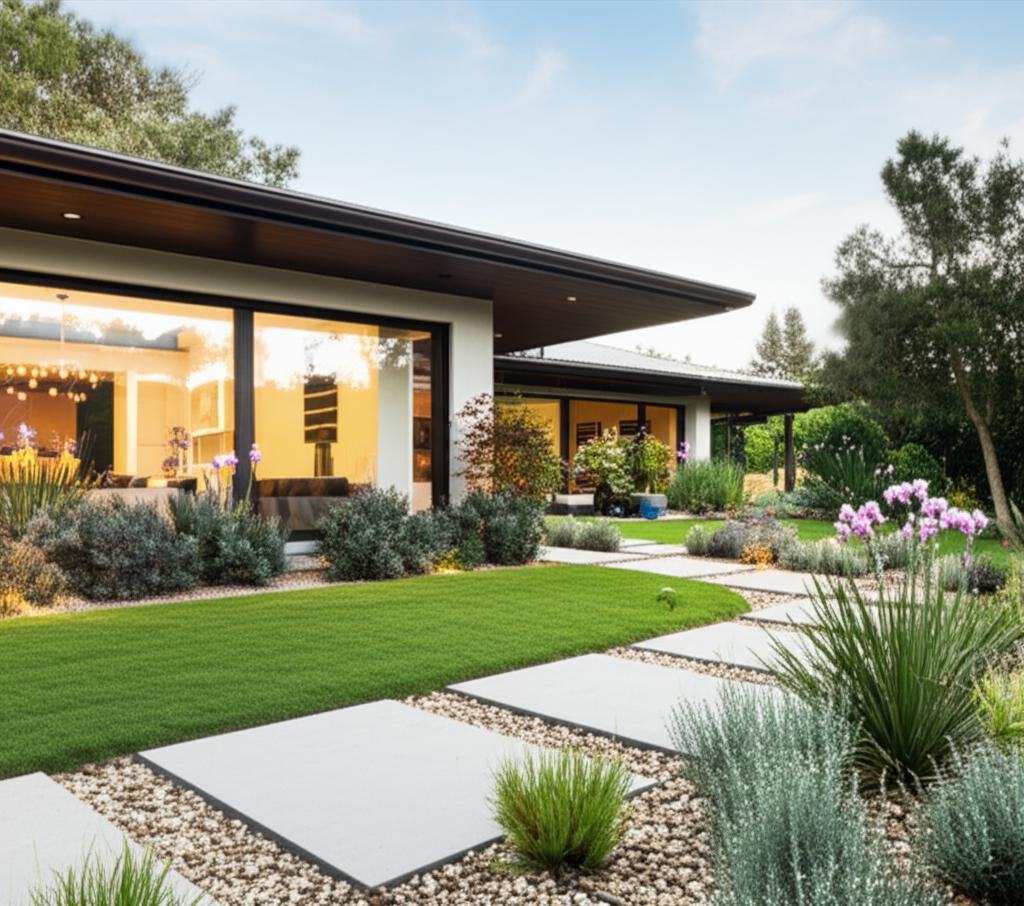Fire-Resistant Landscaping: Protect Your Home
Wildfires spread quickly, and your landscape can influence how much risk your home faces. Fire-resistant landscaping is about more than looks. It is a method of planning your yard so it slows flames, reduces fuel, and protects your property.
This approach often gets called creating a defensible space. The idea is to reduce anything that allows fire to travel to your home. With the right plants, layout, and materials, you can create a yard that looks great while lowering your fire risk.
Key Zones of Defensible Space
Experts often divide defensible space into three zones. Each zone has a different purpose and set of recommendations.
Zone 1: Closest to the Home
This is the area within about 5 feet of your house. It is the most critical zone because this is where fire can ignite your walls, roof, or deck.
- Keep this area free of mulch, dry plants, or wood piles.
- Use gravel, stone pavers, or concrete instead of bark chips or dry grass.
- Choose low-growing, fire-resistant plants with high moisture content.
- Trim branches so they do not overhang the roof or touch the house.
Zone 2: Mid-Distance
This zone covers roughly 5 to 30 feet from your home. The purpose here is to slow fire and prevent flames from gaining strength.
- Keep lawns green and regularly watered.
- Space shrubs and trees apart so fire cannot jump easily between them.
- Remove dead leaves, pine needles, and branches often.
- Use hardscape features like stone walls, patios, or walkways to break up plantings.
Zone 3: Outer Area
This extends 30 to 100 feet from the house. The focus is on reducing heavy fuels that could push fire toward your property.
- Thin out dense trees and large shrubs.
- Mow tall grasses and remove weeds.
- Prune lower tree branches so flames cannot climb into the canopy.
- Maintain open areas or use fire-resistant groundcovers.
Materials That Work Well
Plants are only part of the picture. Non-plant materials help create strong fire breaks and low-maintenance areas. Good choices include:
- Gravel or crushed stone
- Concrete patios
- Brick or stone retaining walls
- Decorative rock pathways
- Metal fencing instead of wood fencing near structures
These materials not only resist fire but also add structure and function to your yard.
Cost and Effort to Expect
Creating a fire-resistant landscape does not always mean starting from scratch. Some homeowners adjust current plantings and add gravel or stone borders. Others invest in a full redesign.
- Small changes like replacing mulch with gravel can cost just a few hundred dollars.
- Larger projects with new hardscaping or complete plant replacement can run several thousand dollars.
- Basic maintenance, such as pruning and debris removal, is mostly a matter of time and effort.
Think about your budget, but also weigh the cost of potential fire damage. Even modest updates can make a big difference.
Final Advice
Fire-resistant landscaping is about creating smart layers of protection. By combining careful plant selection, fire-safe materials, and regular maintenance, you can lower the risk to your home. Start with the area closest to your house, then expand outward as time and budget allow.
Your yard can still be beautiful, and it can also serve as a shield. With thoughtful choices, you can enjoy your outdoor space while knowing you have added an important layer of safety.
**
